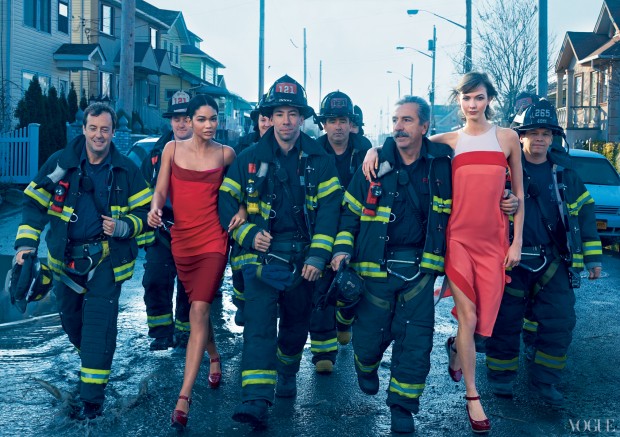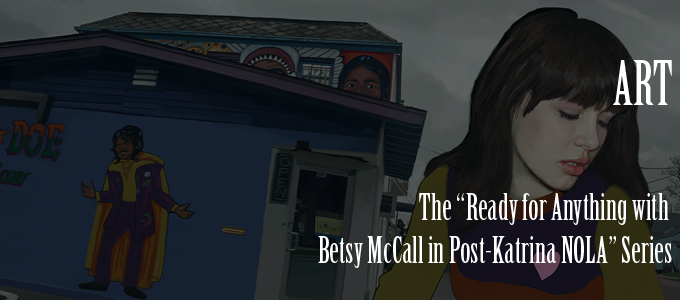I’ve been a little amused by, “Storm Troopers: Celebrating Hurricane Sandy’s First Responders”, the Vogue photoshoot Annie Leibovitz did with the Hurricane Sandy responders and devastation used as a backdrop for fashion models. Such as this Bagnewsnotes blogpost
There’s been a lot of talk on whether or not the photo shoot was inappropriate.
Back in 2007, after Katrina, I did a series of 4 digital paintings titled “Betsy McCall, Ready for (Almost) Anything in Post Katrina NOLA”. My inspiration had partly been what we see in fashion magazines boosting fashion and attire as making women powerful by virtue of their clothing and ornamentation, but the women presented are little more than cut-out paper dolls. Other inspiration had been what I was observing at the time in certain internet forums, again how youth so broadly accepted various types of fashion as not just representing empowerment but being empowerment in a manner that had nothing to do with women as strong individuals but, again, as little more than mannequins–and, most frequently, abused mannequins, or, absurdly, “power” mannequins bound and gagged in sado-masochistic fantasies. I put two and two together and thought that it was only natural we would eventually be seeing fashion shots against future real life cataclysms, scenes of devastation as perfect backdrops to these absurd fetishes of women whose fashion choices made them invincible goddesses, and yet they were also affectless, voiceless and powerless. A lack of real social preparedness and the harshness of subsequent privations, observed in Katrina, seemed to me both a perfect foil and complement to these notions of power.
An every-day runway example are women carefully striding on “power” shoes, which aren’t built for walking, toppling off them, scrambling to upright themselves and being lucky not to break an ankle in the process. From where does the idea of power emanate in this hobbling? Is it the strict restraint and inability to do anything (not a part of the working class) that communicates power in these fashion idols? An ivory tower disregard? A bubble effect (as observed with the Leibovitz shots) wherein these supposed fashion power goddesses can glide through devastation and be absolutely unscathed, their unstained dresses glowing white, their make-up pristine, and, again, their expressions absolutely removed and disconnected?
The privilege of big money is certainly observed in the ultimate, bubble effect disconnect of fashion.
The lead in paragraph to the Vogue article illustrates what I’ve written above on fashion as power, however hobbled and removed in its bubble effect: “When Hurricane Sandy hit, the city’s bravest and brightest punched back. With the area now on the mend, we paid these stalwart souls a visit, dressed up in the best of the New York collections. Call them New York’s other finest.” A parallel is being drawn between fashion and the responders, the “city’s bravest and brightest”. Or at least a feeble effort is being made. For it doesn’t work. The parallel is a fatuous one, for the models in their power fashions are not meant to be on par with the responders. They stand out against the scenes as goddesses descending from on high, scarcely interacting, their peculiar mystique presented not only as a kind of morale builder but fashion’s “power woman” penultimate example of a job so well done that the cut out paper doll, ready for anything in her power fashion gear, is untouched by flame and flood.

Ready for Almost Anything with Betsy McCall in Post Katrina NOLA
25 by 24 inches
Digital Painting 2007
The rest of the “Betsy” series is here.

Annie Leibovitz, 2013, Hurricane Sandy photo shoot for Vogue

Leave a Reply